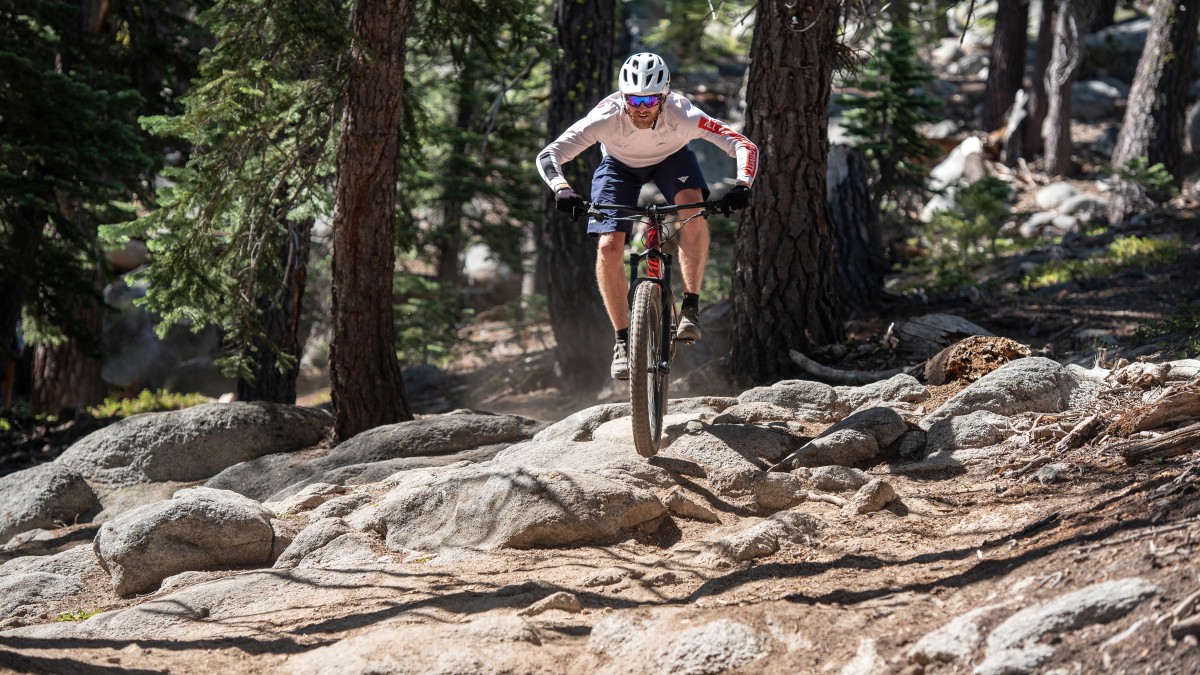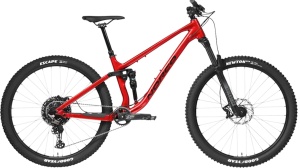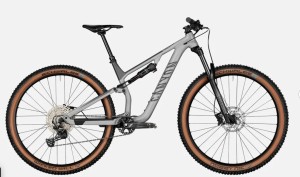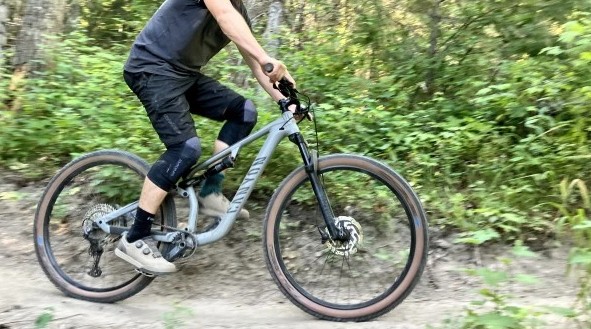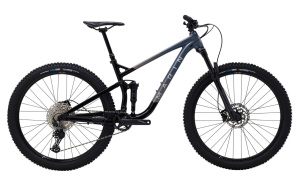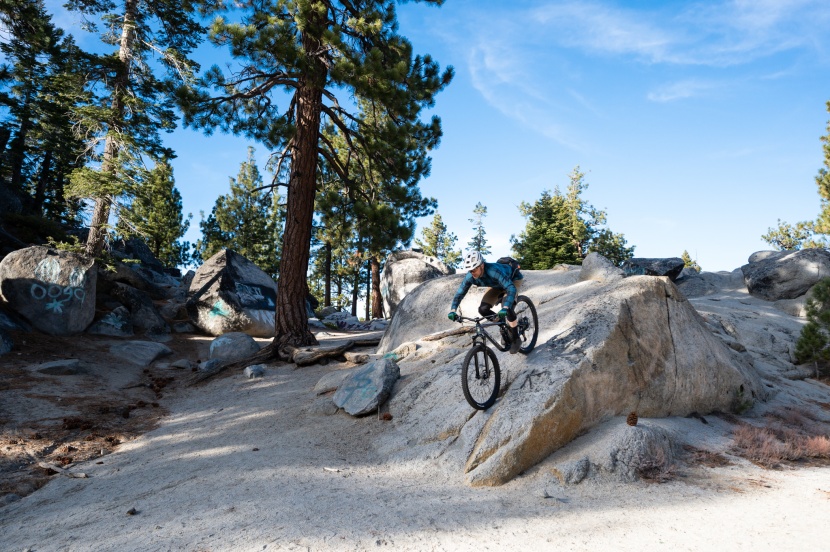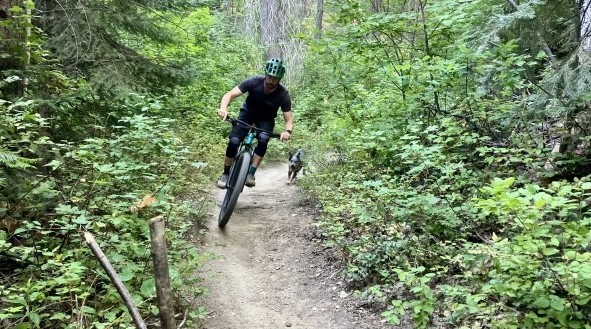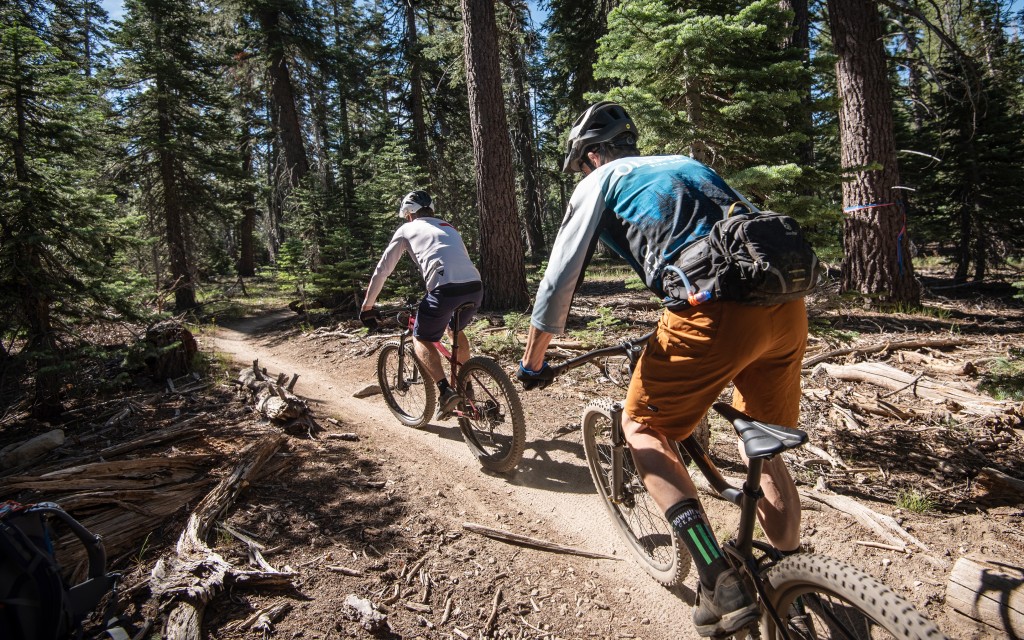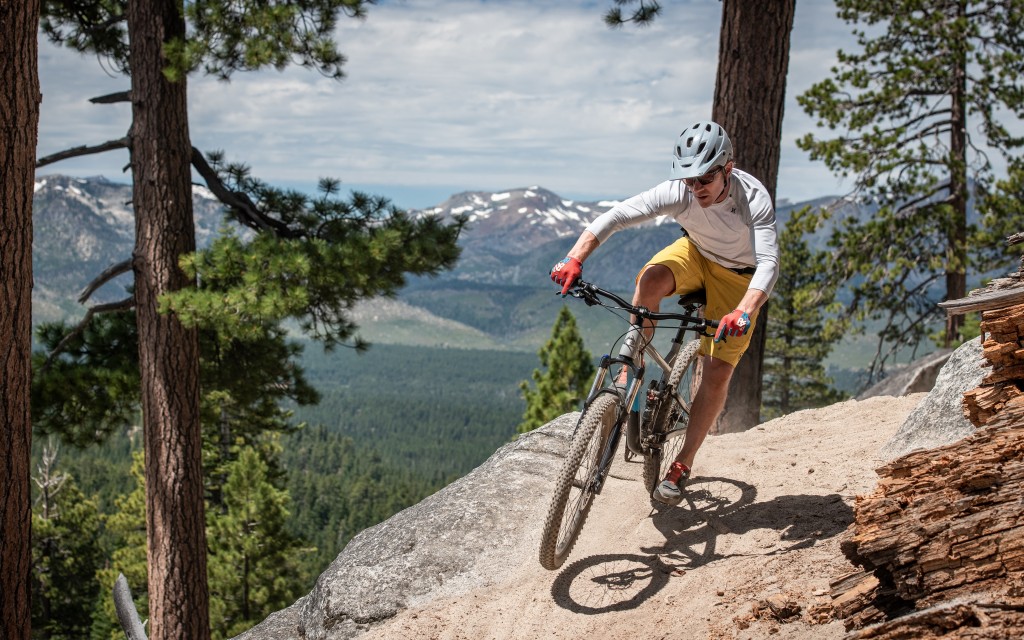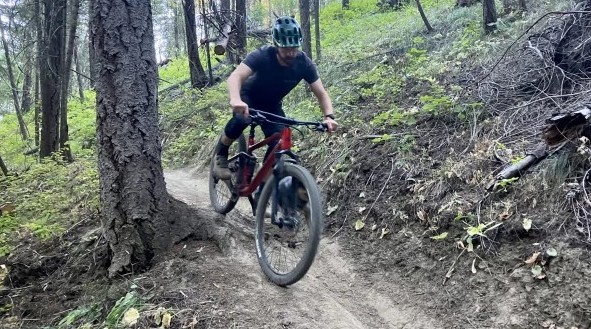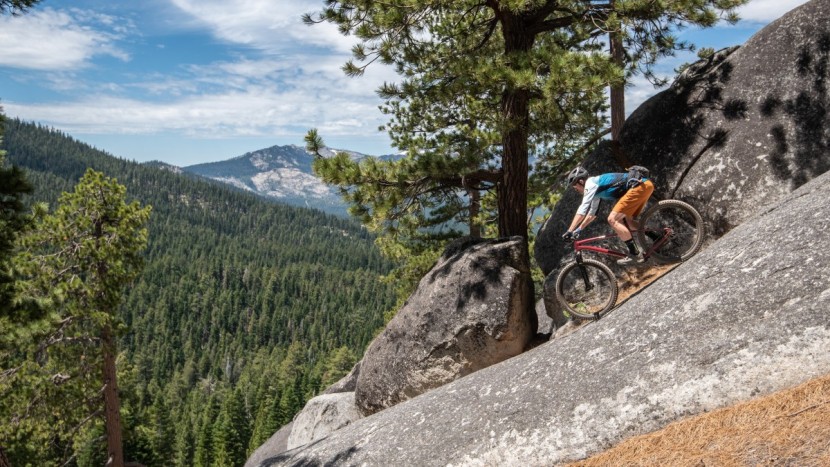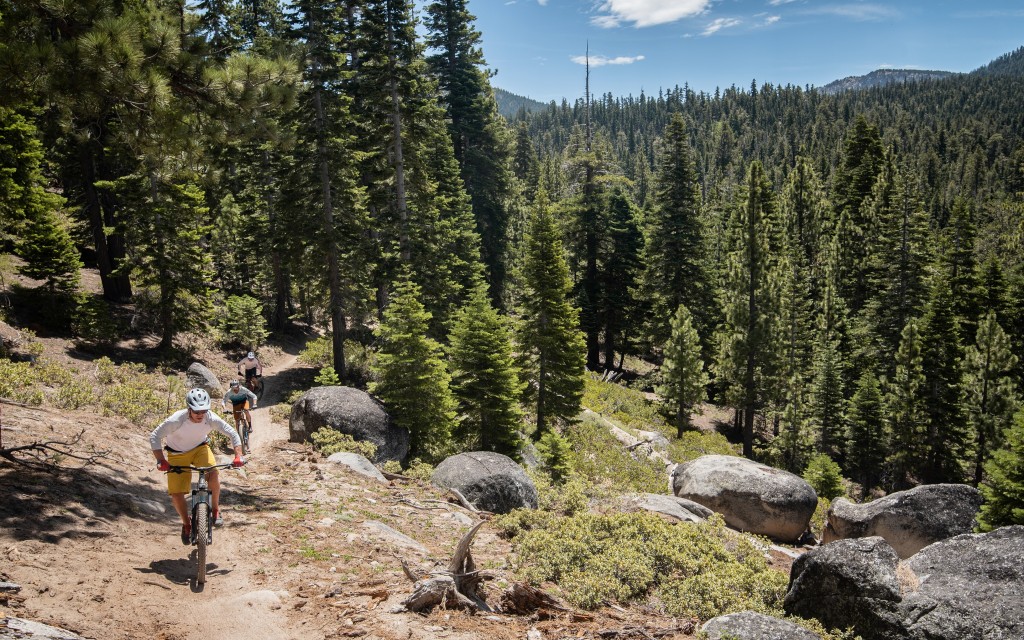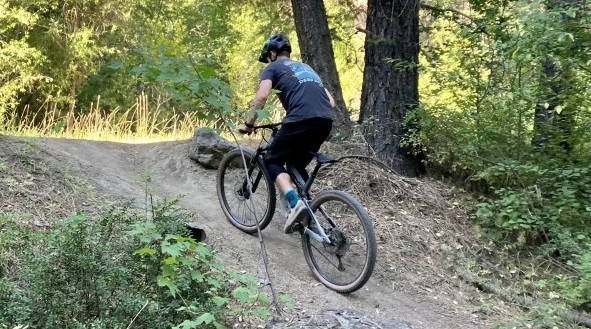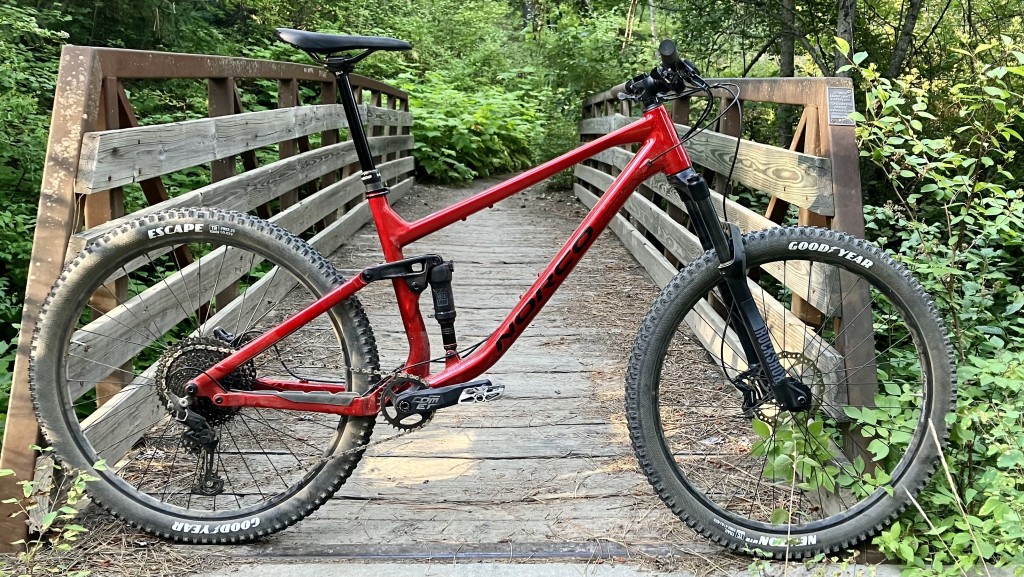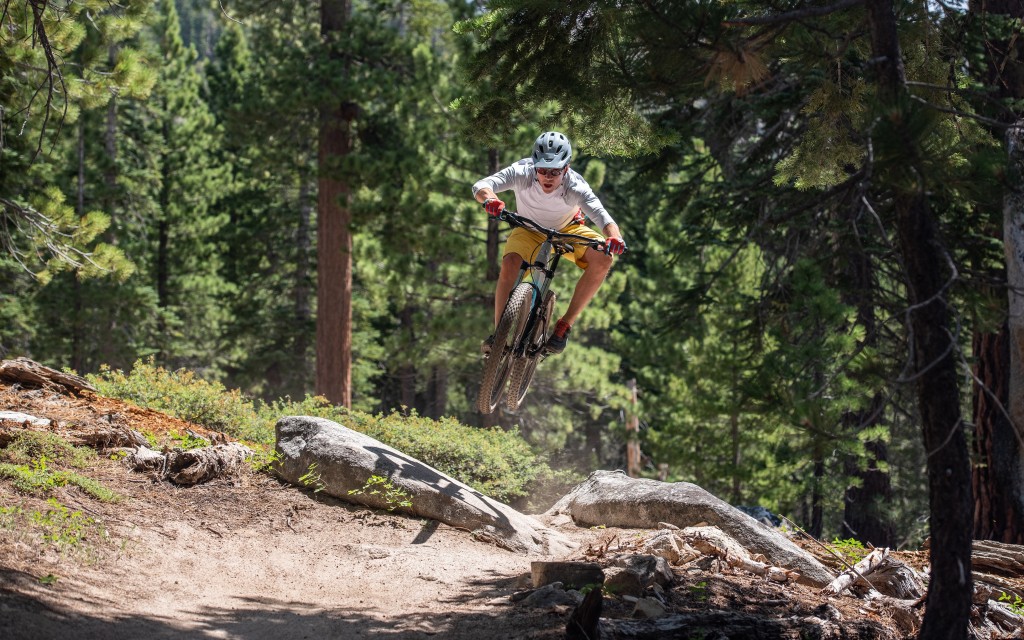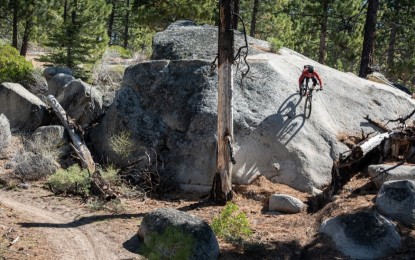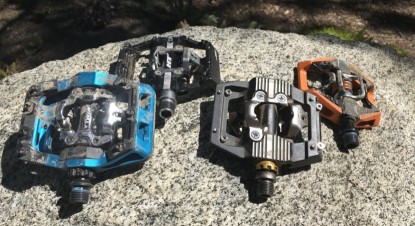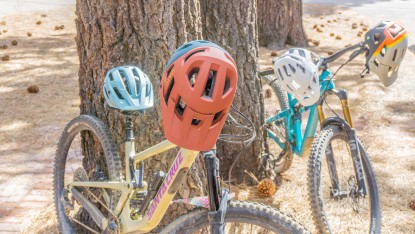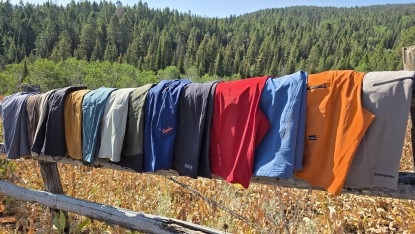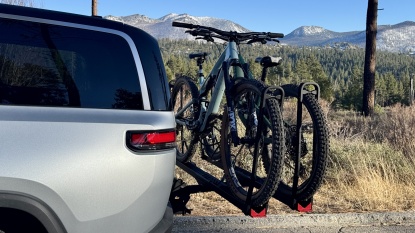Mountain bikes are expensive, but having fun on the trails doesn't have to mean maxing out that credit card. We love testing mountain bikes, and when we find bikes that offer exceptional value, we showcase them here. The bike we're constantly recommending to friends is the Norco Fluid FS 4. It's an outstanding trail bike that uses a 4-bar linkage to deliver 130mm of travel to rip descents. The Fluid is highly versatile, downright cheap, and a little porky.
The Canyon Neuron 5 has the same amount of travel but feels agile and efficient, which impressed us all. Canyon's consumer-direct model means more bike for the dollar, but you're unlikely to find a test ride. The prices of the bikes in this review vary, but they're all exceptional values.
Our Picks of Budget Mountain Bikes
Best Overall Budget Full-Suspension Mountain Bike
Norco Fluid FS 4
The Norco Fluid FS 4 is the best budget-friendly full-suspension mountain bike we have ridden by a healthy margin. This bike exudes confidence on the descent and feels extremely composed and capable on difficult terrain. In fact, it was easy to forget we were riding a “budget” bike while we found the flow. The progressive geometry feels extremely modern, and the nice build kit features a long-travel dropper, which is rare in this price range. Testers had a blast riding this bike on all sorts of terrain but found it excelled on more aggressive terrain as opposed to rolling trails. Climbing abilities weren't exciting, but the Fluid provided a comfortable climbing position that was easy to get along with.
The elephant in the room is this bike's weight, a hair over 36 pounds set up tubeless. It should be noted that this bike had an extra large frame, while most bikes we tested were large frames, so this XL frame is naturally a bit heavier. Weight weenies, or riders concerned with maximizing efficiency, may want to look elsewhere. While the Norco was a solid and comfortable climber, it wasn't especially quick. While the build kit was largely stellar, the X-Fusion rear shock did not have a climb switch, a feature that would have come in handy on fire road or double-track climbs.
Read more: Norco Fluid FS 4 review
Best Full-Suspension Bike Under $2000
Canyon Neuron 5
The Canyon Neuron 5 is an ultra-efficient trail bike with a cross-country attitude. This 130mm trail bike has conservative (steeper) geometry than many bikes in this travel class, resulting in a very agile and crisp ride. While bikes with longer wheelbases and slacker front ends need a healthy amount of speed to come alive, the steeper and shorter geometry on the Neuron is incredibly responsive, and this bike is razor-sharp. Climbing efficiency is outstanding, and despite its 33.5-pound weight, we were flying uphill on this bike. It is very easy to ride and doesn't require an aggressive pilot. This might be your bike if you value climbing efficiency above all else.
The Neuron is a quick-witted bike with swift climbing abilities. That said, it doesn't love choppy or loose terrain. This bike felt a little twitchy and unsteady on rougher trails, while the 2.4-inch Schwalbe rubber prioritizes rolling speed over outright traction. This bike can get overwhelmed in technical terrain; if you're looking to ride particularly rough or steep trails, we recommend looking elsewhere.
Read more: Canyon Neuron 5 review
Another Great Affordable Trail Bike
Marin Rift Zone 29 2
The Marin Rift Zone 29 2 is a versatile, shorter-travel trail bike with a relatively well-rounded performance. With 125mm of rear-wheel travel, a 130mm fork, and up-to-date geometry, this bike rips harder than you'd expect on the descents. It's quite stable at speed and capable of tackling some aggressive terrain, yet it remains easily maneuverable and playful when you want it to be. The suspension platform is fairly calm, and the Rift Zone is a comfortable and relatively efficient climber, given its slightly heavier weight. It also has modern touches like nice wide handlebars, a dropper post, and beefy tires to match its downhill capabilities. This is a great do-it-all trail bike option for the rider on a budget or those just getting into the sport and looking to progress their skills.
We loved the Marin Rift Zone 29 2, but it isn't perfect. Registering at over 34 lbs, it's heavier than most bikes in this review; that weight is especially noticeable when climbing. While we were satisfied with most aspects of its build, slowing and stopping this bike has been left to a set of 2-piston Shimano MT200 brakes. While these brakes work the levers have poor ergonomics, and they're underpowered. That aside, we were impressed by this affordable and versatile trail bike.
Read more: Marin Rift Zone 29 2 review
Most Versatile Budget Hardtail
Trek Roscoe 7
The Trek Roscoe 7 is a hardtail mountain bike built for adventure. Whether you want to ride your local singletrack, explore some old forest double track, or go on a bikepacking trip, this bike has you covered. The 29 x 2.6-inch Bontrager XR4 tires are fast, offer a surprising amount of traction, and allow for lower tire pressure, which helps deliver a comfortable ride. Climbing abilities are impressive, and this bike is a fun descender on the right terrain. While this bike is capable on singletrack, its versatility makes it stand out as a hardtail. This bike is a great choice for riders looking to embark on adventure rides, prioritizing versatility over outright singletrack charging.
As noted above, the Roscoe shines for its adaptable personality and versatility. Riders who want to push their limits on the trail should seek a more aggressive bike. While this bike is comfortable on typical singletrack, it hits a speed limit on aggressive blue or black trails. While the component specifications were largely impressive, our Shimano Deore 12-speed shifter failed out of the box. We found the remaining Shimano Deore 12-speed components to be of excellent quality. For something similar that costs a few dollars less, check out the Co-op Cycles DRT 1.3.
Read more: Trek Roscoe 7 review
Compare Products
Why Trust GearLab
Our team researched the best bikes you can buy for under $3,000. We've purchased and tested dozens of them, but these 11 are the best you can buy today. We stacked them up for side-by-side comparative analysis. After building and weighing each model, we took to the trails and rode these bikes as much as humanly possible on all types of terrain. We pedaled each model for hundreds of miles on familiar trails and test loops while focusing on their key ride characteristics. Each bike was ridden as hard as the next, and sometimes back to back for a direct comparison to see how each performs in all situations.
Senior Bike Editor Joshua Hutchens leads our budget mountain bike review. Joshua has been testing and reviewing mountain bikes with GearLab since 2017 and has ridden and reviewed hundreds of bikes. Hutchens started riding mountain bikes in 1987, the same year he got his first bike shop job. He loves bikes and is grateful to get to share his knowledge of them here and through his coaching practice. You can find him pedaling dirt on the West Coast or drinking coffee at the GearLab headquarters. Joshua's favorite trails are Captain Ahab in Moab and Mr. Toads in beautiful Lake Tahoe.
Analysis and Test Results
Our budget mountain bike testers spent months riding these affordable mountain bikes throughout the Lake Tahoe region. Each model was ridden for hundreds of miles and tens of thousands of vertical feet. We didn't take it easy on them, either. Instead, we pushed each to—and sometimes beyond—their limits while evaluating each on fun factor, downhill performance, climbing performance, and build kit. Our testers were pleasantly surprised and impressed by the performance of these inexpensive mountain bikes. Carry on for a detailed comparative analysis of the models in this test.
Related: How to Select the Right Mountain Bike
What's the Best Value?
All of the models in this test were chosen because they offer excellent value. Some more than others, but we tried to cover a range of performance with prices under $3000. All are suitable for getting out and exploring the trails. Two options stand out as particularly strong values.
The Norco Fluid FS 4 is also on the more expensive side, but it's also quite capable. We were able to charge hard on this bike while forgetting that we were testing “budget” bikes.
Fun Factor
In addition to being a great form of exercise, we ride mountain bikes because it's fun. Getting out in the woods and riding trails on just about any bike is more fun than not getting out at all, but some bikes are just more fun to ride than others. We based our fun factor ratings on the size of our testers' smiles at the end of a ride as well as their general assessment of how good a time they had while riding each bike.
The Editor's Choice Norco Fluid FS 4 was incredibly fun. You could ride this bike very hard, and it felt like a more expensive bicycle. This bike had the highest speed limit, most capable geometry, and the most confidence-inducing performance of any bike in this test class. While this bike was happy to get airborne and play on the trail, the real reason this bike was so fun was the ability to cut loose and ride as fast as you wanted.
The Co-op DRT 1.3 is a versatile and fun bike that won't hold you back. While it definitely prefers mellow to moderate terrain, it has an appetite for adventure. This bike can be easily taken on a bikepacking mission, a commute to work, or an evening hot lap. This adaptable and versatile attitude is quite enjoyable. The Canyon Neuron 5 was also a blast to ride. The conservative geometry made it very responsive, allowing any rider to hop on and have fun.
Downhill Performance
So, how do these budget mountain bikes perform on the descents? All of the bikes in this review will get you down the majority of downhills you'll encounter on everyday mountain bike rides, and a few of them will do it more comfortably and easily than the others. The downhill performance of these bikes is affected by their suspension, geometry, and components, and they are all slightly different from one another. A few of these bikes proved to be far more capable on the descents than we expected.
The two Editor's Choice bikes, the Norco Fluid FS and Ibis Ripmo AF, blew our minds in this metric. The Ripmo AF that we tested has been discontinued but the replacement is better than ever, keep you eyes peeled for a new review coming soon. Their progressive geometry and killer suspension kinematics, paired with long dropper posts, really unlocked the shred. This Norco's 130mm travel was comfortable, versatile, and loved to party. The Ibis absolutely slayed the trail when pointed downhill; you won't find a more capable bike at this price point. Both bikes have relatively slack geometry, which provides confidence on steeper trails. Simply put, these bikes could be ridden significantly harder than the rest of the “budget” bikes in our review.
The Canyon Neuron and Trek Roscoe 7 have more conservative geometry, which provides a quick and agile ride but doesn't inspire confidence in steeper terrain. These bikes were more eager to change directions and less apt to muscle through the tough technical terrain.
This Rocky Mountain Growler 40 is in another league thanks to its longer wheelbase, reach, and slacker head tube. The Growler was capable and comfortable tackling just about everything, limited only by its lack of rear suspension. Modern geometry inspired the confidence to tackle steep and rough terrain, open it up, and let it rip on the straightaways.
The Trek Roscoe 7 and Co-op DRT 1.3 couldn't quite match the speeds of the Grwoler, but were surprisingly adept. Both bikes use 2.6-inch tires and offer a well-balanced blend of traction, damping, and rolling speed. Both bikes also prefer life closer to the ground, where the Growler is constantly ready for the next jump.
Climbing Performance
All of the models in this test performed relatively well on the climbs. The weights of these bikes range from 30 to 36 pounds, and they all come with 1x drivetrains that offer adequate range for most uphill scenarios. You'd never confuse any of these bikes with super lightweight and efficient XC race bikes, but they all do a reasonable job of getting you up to the top of the hill, regardless.
The standout performer on the climbs was the Canyon Neuron 5. On the very first test ride, one of our testers snagged numerous uphill Strava KOMs on this bike. It wasn't expected, but it quickly became apparent that the Neuron is fast-rolling, comfortable, and very efficient when aimed uphill. Despite weighing a few pounds more than some other bikes in this review, the fast-rolling Schwalbe rubber paired with a breezy Shimano Deore 12-speed drivetrain had us scooting uphill with ease. The suspension platform was on the firm side, making the most of rider energy. The conservative geometry allowed us to negotiate tight switchbacks very easily and find the best line through technical problems. This bike's steeper geometry and shorter wheelbase provided crisp steering and excellent performance in tight spaces.
It came as no surprise that all of the hardtails in this test performed admirably on the climbs. Hardtails are known for their direct power transfer and climbing efficiency, and the Trek Roscoe is an absolutely perfect example. This bike was extremely efficient and made light work of singletrack, fire road, or gravel climbs. The meaty 2.6-inch rubber provided a large patch of traction while still rolling exceptionally fast. This provided a dialed blend of efficiency and traction that was hard to match. Being a hardtail bike, the Roscoe couldn't quite hold its own against its squishy competition on ledgy or technical climbs, where the rear wheel would bounce around. That being said, soft knees and legs go a long way when piloting this bike over rocks.
Build
These bikes are all on the lower end of the price spectrum, and their builds, or component specifications, generally reflect that. After all, they are budget mountain bikes. While this price range of bikes continues to feature better and better components, they will always be budget builds. Still, some bikes feature far nicer drivetrains, tires, and brakes than others.
The top-scoring Norco Fluid FS 4 has an impressive build. While it uses a Shimano Deore 11-speed derailleur and shifter, it uses a SunRace wide-range cassette that offers essentially the same gearing as a 12-speed drivetrain. 11-speed drivetrains at this price point are often more crisp and consistent as opposed to some lower-end 12-speed drivetrains. The suspension duties were performed by a RockShox Recon fork and X-Fusion 02 rear shock. While these parts weren't flashy, they were effective. The Norco used powerful Tektro brakes, a 200mm dropper post, and surprisingly good Goodyear tires.
The Canyon Neuron was another standout in terms of its build kit. This bike features a Shimano Deore 12-speed drivetrain, a true workhorse. Shimano brakes and house-brand wheels round out this build. The Schwalbe Nobby Nic/Wicked Will combination is a curse and a blessing. This fast-rolling rubber really complements this bike's best assets. People who ride on challenging trail surfaces may want to upgrade to more aggressive rubber.
The Trek Roscoe 7 and Co-op DRT 1.3 stand out from the other hardtails in this review due to their high-quality, higher volume tires. The 2.6-inch Bontrager XR4 or Maxxis Rekon tires roll fast while also allowing riders to run a fairly low pressure, which creates a more comfortable ride.
Conclusion
Sure, you can spend upwards of $10,000 on a brand-new mountain bike, but you can also spend a fraction of that and still get out on the trails and have a great time. Whether you're looking for your first mountain bike, upgrading from an older model, or stepping up to your first full-suspension bike, there are more quality, affordable options on the market than ever before. The number of bikes available can make shopping feel overwhelming, and when buying a budget model of anything, you want to make sure you're still getting a quality product. We hope that this review helps narrow down your choices and helps you with your purchasing decision. Your next mountain bike is out there, and we hope this helps you find it.
—Joshua Hutchens, Pat Donahue


